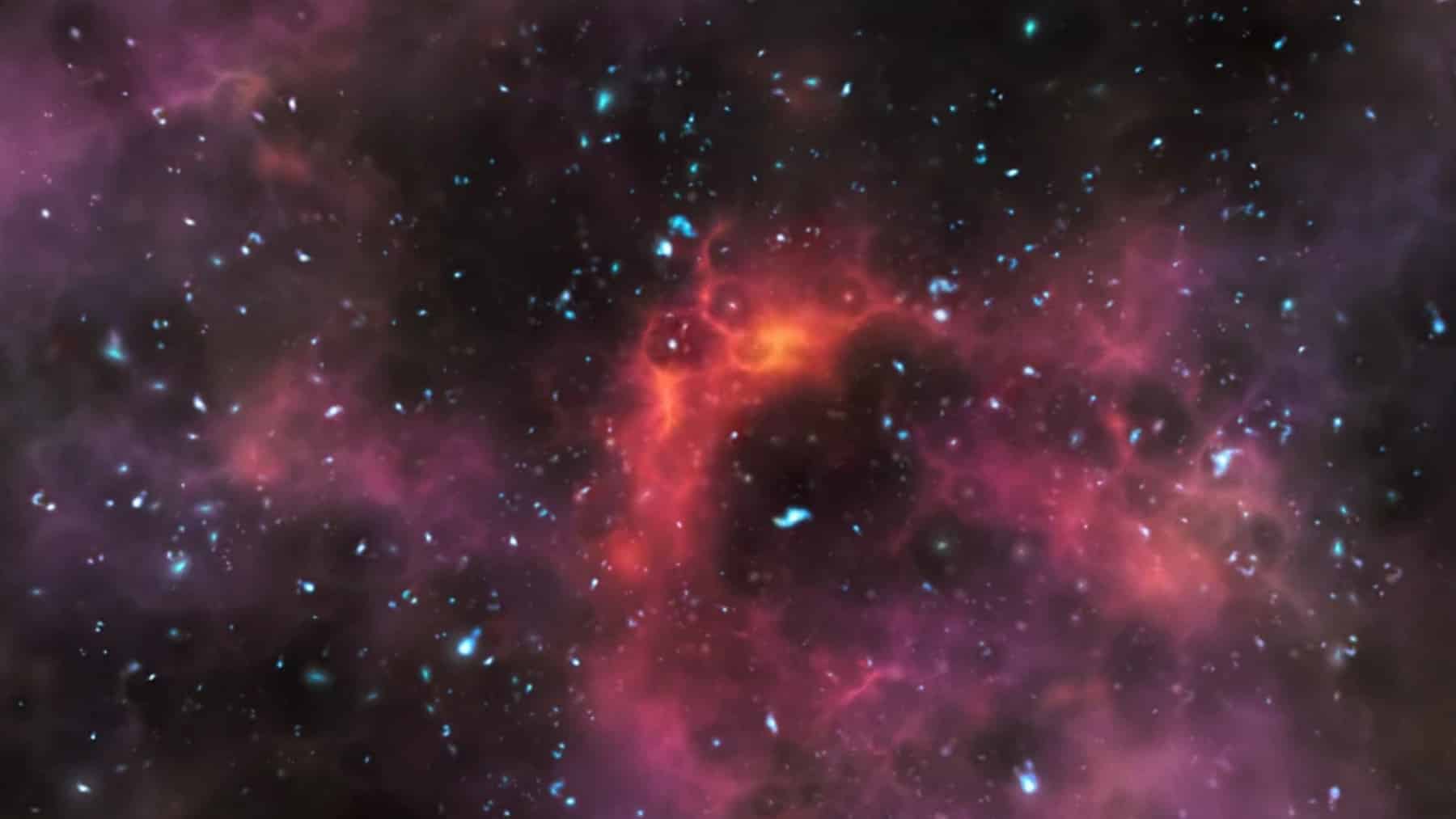To understand what’s happening, we need to consider: for a long time, looking back at the beginning of the universe was like trying to watch the beginning of a movie with the screen still off, you know? We knew the Big Bang happened, of course. We also knew that, at some point, the first stars appeared and began to light up space. What happened between the “bang” and the brightness? Well, the answer didn’t come from a state-of-the-art supertelescope, but rather from a modest antenna, the size of a coffee table, installed in the middle of nowhere in Australia. It picked up something no one had heard before: a very ancient, almost faint, but incredibly revealing echo. And most impressively: this echo came from one of the very first elements in the universe…
The time when there was only darkness, silence, and freezing cold
Now, let’s do a quick exercise: imagine a universe without light, without stars, without planets, without galaxies. Just darkness. That’s exactly where we are: about 180 million years after the Big Bang. This phase is called the Cosmic Dark Ages, and there’s nothing poetic about it; it was literally pitch black.
Besides being dark, this universe was absurdly cold and much colder than any scientist imagined. According to data collected by the EDGES experiment, the temperature was about -454°F. That’s why one of the most intriguing hypotheses involves an old acquaintance of modern physics: dark matter.
The first creation of the Big Bang
Finally, we arrive at the main protagonist of this discovery: primordial hydrogen, the simplest and most abundant element in the universe (but quite different from the hydrogen we use now, as in this hydrogen furnace). Invisible, silent, and until then untouchable in terms of direct detection in this early phase of the cosmos. But it was there, quietly, waiting for the right moment.
What changed everything was the emergence of the first stars, because when they began emitting ultraviolet radiation, the surrounding hydrogen responded. Essentially, it began absorbing background radiation, creating a “dip” in the radio waves—exactly the kind of signal the EDGES antenna was looking for.
The result was a frequency of 78 MHz, which corresponds to about 180 million years after the Big Bang. What does this mean? Simply put, this is the oldest record ever made of the presence of hydrogen in the universe. A signal that would only exist if the stars were already shining. In other words, hydrogen was also the first messenger of light. A character who spent billions of years silent and now finally has his voice heard.
“This is the first real signal that stars are starting to form, and starting to affect the medium around them,” says Alan Rogers, a scientist at MIT’
All thanks to an antenna in the desert
Now comes the detail that adds charm to the whole story: this giant breakthrough in cosmology came not from a super laboratory or a billion-dollar satellite, but from a table-sized terrestrial radio antenna, placed in one of the most remote places on Earth: the Australian desert. We’re talking zero Wi-Fi and zero noise, the ideal setting to hear the oldest whispers of the universe.
This project is called EDGES and was created precisely to detect the “beginning of light.” And look… it worked. The level of precision required to capture this signal is absurd. With this detection, we now have direct evidence of the moment when the first stars began to influence the surrounding universe. More than that, we have a real clue as to when the primordial chaos began to organize. Along with researchers operating the James Webb Telescope, who just announced an “unimaginable” discovery 280 million years after the Big Bang, this only shows us that this is just the beginning.
